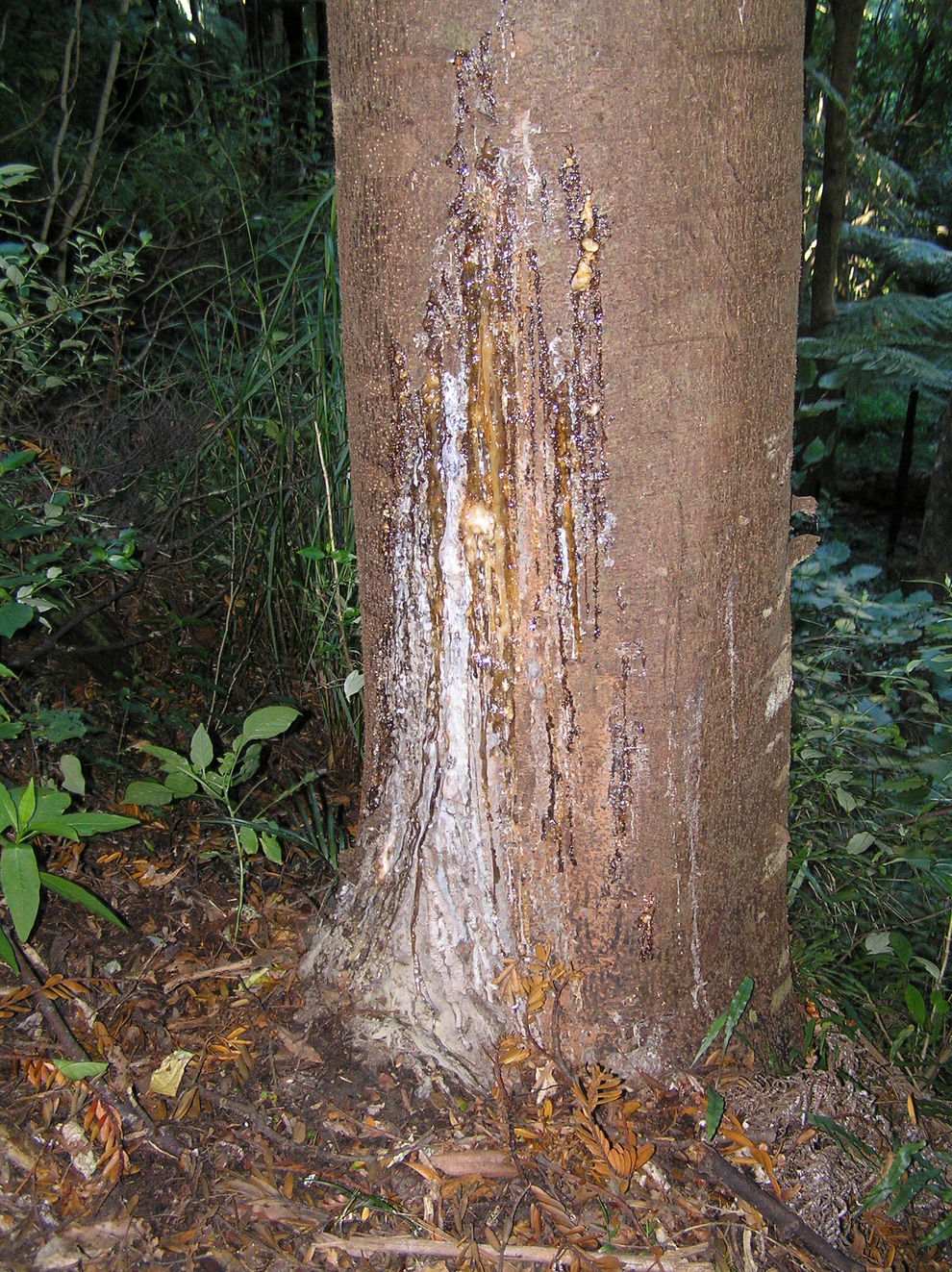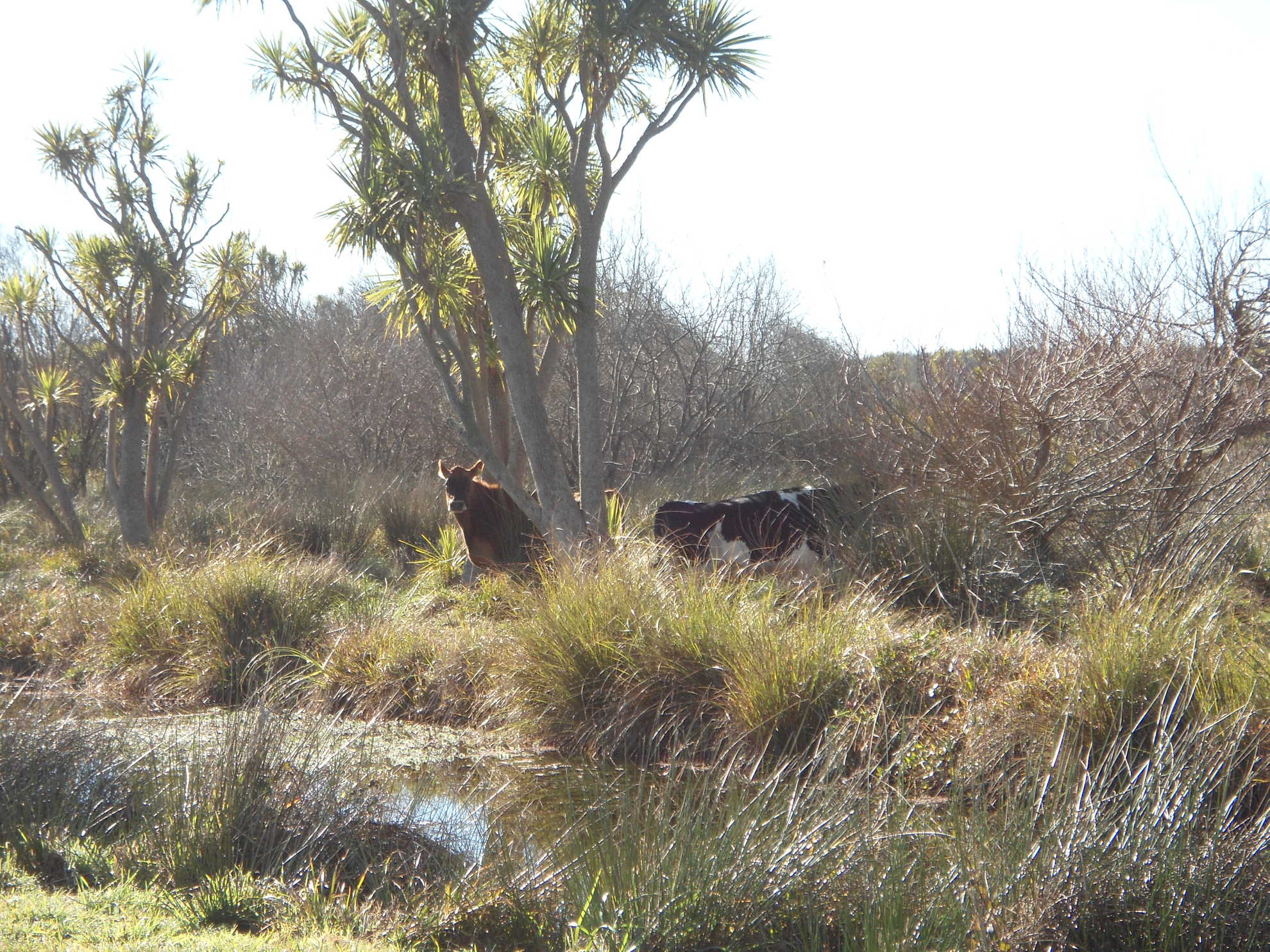Invasive Species
The rapid colonisation of New Zealand by exotic species has dramatically altered the country’s biodiversity. It has led to an increase in the total number of species and means that New Zealand has the most introduced mammals in the world, and the second highest number of introduced birds. In 2000, there were more introduced vascular plant species than indigenous species. Invasive species pose a significant threat to indigenous biodiversity due to several factors including predation and competition for space and resources. 5096
Forests
Pest animals have significant adverse impacts on indigenous forest ecosystems. Mammalian pests include brushtail possums, goats, deer, pigs, weasels, ferrets, stoats, cats, hedgehogs and rats. Mammalian pests damage forest ecosystems by browsing on sensitive forest vegetation. Possums present one of the biggest threats to indigenous forests: they browse on trees and seedlings which lead to large scale devastation. Through possums’ eating of the seedlings of indigenous plants, regeneration of the forests is inhibited, a food source for indigenous birds is depleted and there is a detrimental impact on carbon sequestration.
Mammalian pests can eat significant amounts of seed crops of particular plants, which impacts on natural regeneration. They also kill indigenous birds and animals, destroy nesting sites and deplete food sources for indigenous birds. Without predator control, nine out of ten North Island brown kiwi chicks born in the wild will die before they are one year old. 5097
Stock browsing and trampling can significantly damage plant species diversity and abundance. Browsing of particular tree species can change the make-up of a forest, causing the loss of palatable species. Livestock also facilitate the invasion of exotic species through seed dispersal and soil disturbance.
At a conservative estimate, New Zealand has at least 19,000 species of introduced vascular plants, of which over 2000 are naturalised and 240 species are recognised as invasive weeds. 5098 This contrasts with an entire indigenous flora of little more than 2000 species. Introduced weeds pose a significant threat to indigenous forest systems, particularly small lowland remnants. They modify the forest ecosystems in a number of ways, including smothering indigenous plants and suppressing the natural regeneration of indigenous understory and canopy species.
Through invading the forest area, these weeds produce a flow on effect that is experienced right through a whole ecosystem. Weeds, such as pampas, bamboo, ginger, gorse and black wattle, invade indigenous forests from nearby urban areas. These invasive plants may also bring with them diseases and viruses which are a potential threat to indigenous plant species. As indigenous plants are displaced, food sources for indigenous birds and invertebrates are lost. Ultimately, the seed dispersing function these birds perform will disappear, potentially leading to the collapse of the forest ecosystem.
Plant pathogens can also have profound impacts on forest ecosystems. Kauri dieback (Phytophthora taxon Agathis), is posing a serious threat to kauri forests in the upper North Island. This disease is responsible for killing kauri trees of all ages. The spores live in soil and are spread with soil movement. Dirty footwear, animals, equipment and vehicles are responsible for the large scale spread of this disease. 2503 As no treatment is yet available, this pathogen has the potential to devastate the country’s remaining indigenous kauri forest ecosystems as similar pathogens are now doing elsewhere in North America and Australia.

Grasslands
Invasive animals
Introduced mammals can also create major problems for biodiversity in grassland ecosystems. Himalayan tahr, chamois, goats, feral sheep, rabbits, hares, possums, wallabies, pigs and red deer all graze on the grasses. Rabbits and hares are major grazers, as are possums and wallabies. 5101 Not only do many of these mammals browse on the grasses themselves, but they predate on the indigenous birds and invertebrates that live there. In addition, some feral animals, such as rabbits, are difficult to control and can easily invade areas where active grazing has been removed.
Invasive plants
The introduction of pastoral land use brought exotic pasture grasses and weeds into these habitats. These include hawkweeds (Hieracium spp.), woody weed species, and wilding conifers such as lodgepole pine (Pinus contorta) and radiata pine (Pinus radiata). Hieracium species rapidly invade severely depleted grasslands, especially in Canterbury. Some species can form a ground cover that restricts regeneration of indigenous species. In addition to reducing biodiversity, some of these species directly impact on stream water flows, consume groundwater, and fundamentally transform the landscape.
Wilding pines are a significant, widespread and rapidly pressing problem, particularly in the South Island high country, and in some parts of the North Island. Environment Canterbury estimates that 62,000 hectares of the region contains wilding pines. 5102 Seeds from pine plantations can travel up to 30 kilometres on the wind and rapidly colonise grassland. 5103 These weeds can be hard to control, especially once they have grown into larger trees. One of the biggest threats from wilding pines is that they rapidly self-colonise grassland where grazing is occurring. Some of the biggest wilding pine invasion problems are found on grazed land in the Mackenzie Basin and Wakatipu. The result is a mono-culture, with little biodiversity value, that completely transforms the landscape.
Wetlands
In addition to draining, weed invasion is one of today’s main threats to the survival of wetlands and the species that live in them. Because many wetlands are found near human settlements, and contain low-growing vegetation communities, they are often among the hardest hit by water-tolerant weeds.

Weeds can affect how a wetland’s hydrological system functions, impact on nutrient regimes, compete with indigenous plants, and alter important food and habitat resources. Wet tolerant weeds that are tall and shrubby can easily shade out indigenous grasses and rapidly colonise wetland areas. Invasions by exotic plants have a significant ripple effect through an ecosystem: indigenous animals and birds reliant upon indigenous plants will be displaced and ultimately the functions these animals and birds perform, like pollination, also disappear.
Introduced mammals have caused major damage to many wetland habitats. Animals like rabbits, hares and possums eat wetland plants. Many of the introduced mammals, such as rats and stoats, kill indigenous insects and lizards, and eat indigenous birds and their eggs. Pest fish, such as koi carp, feral goldfish and catfish, can compete with indigenous species, stir up sediments and reduce the water quality of wetlands. More recently infestations of didymo, an exotic alga, are threatening wetlands in the South Island by smothering rocks, submerged plants and other materials. 5104
Urban pests
Domestic dogs and cats harm and kill birds and a range of other species including weta, skinks and lizards. In particular, cats are believed to be responsible for the extinction of more bird species worldwide than any other factor, aside from habitat destruction. They are considered to be a key threat to indigenous birds in New Zealand’s urban areas. This has consequences beyond the reduction in the population of a particular species, as birds (such as kereru) play a vital role in dispersing seeds. Although domestic cats (and some dogs) kill invasive species, including rats, mice and possums, they disproportionately impact indigenous species. 5105
-
http://www.kauridieback.co.nz/kauri-dieback/how-does-it-spread
-
Brake L and Peart R, 2013. Treasuring Our Biodiversity: An EDS Guide to the Protection of New Zealand’s Indigenous Habitats and Species. Environmental Defence Society, Auckland
-
http://www.doc.govt.nz/conservation/threats-and-impacts/animal-pests/need-for-pest-control/
-
http://www.doc.govt.nz/Documents/science-and-technical/Managingweeds1.pdf
-
http://www.pce.parliament.nz/assets/Uploads/Reports/pdf/PCE_Forestry_Handout.pdf
-
http://www.pce.parliament.nz/assets/Uploads/Reports/pdf/PCE_Forestry_Handout.pdf
-
www.wildingconifers.co.nz
-
http://www.pce.parliament.nz/assets/Uploads/Reports/pdf/PCE_Forestry_Handout.pdf
-
Brake L and Peart R, 2013. Treasuring Our Biodiversity: An EDS Guide to the Protection of New Zealand’s Indigenous Habitats and Species. Environmental Defence Society, Auckland
-
Brake L and Peart R, 2013. Treasuring Our Biodiversity: An EDS Guide to the Protection of New Zealand’s Indigenous Habitats and Species. Environmental Defence Society, Auckland
Last updated at 12:53PM on May 24, 2021